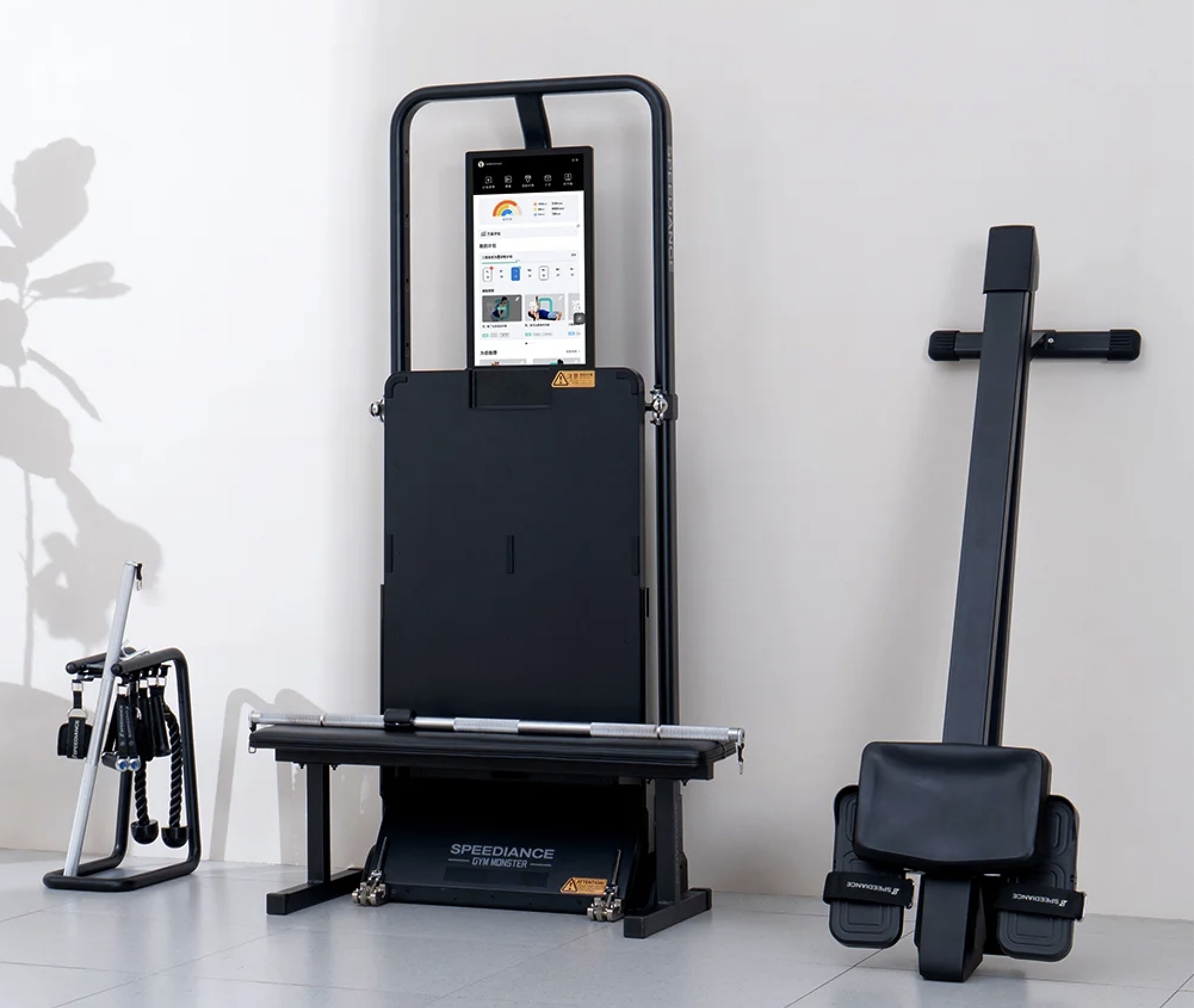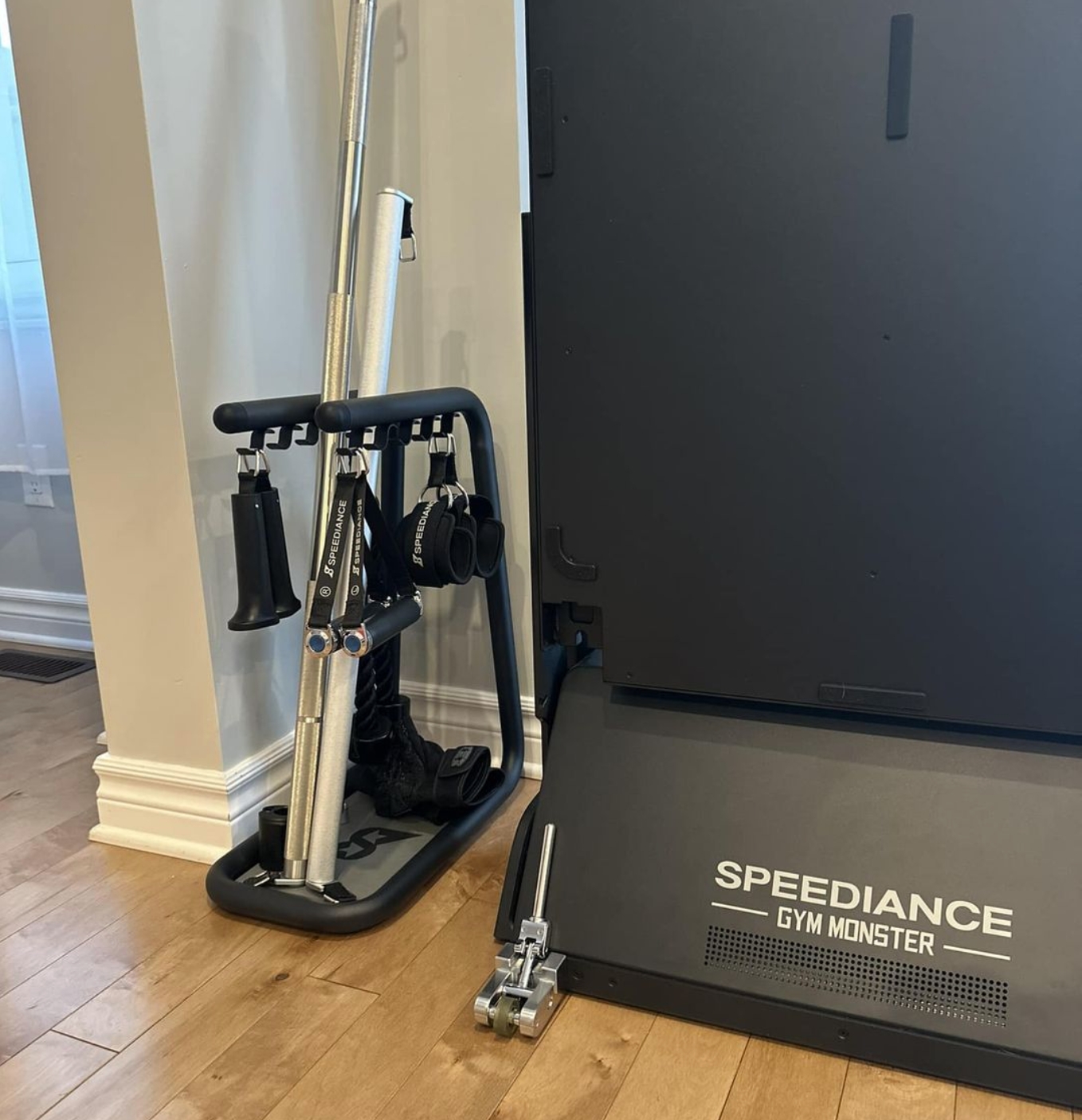Essential Tips For Cleaning Your Home Equipment After Workout
Jul 14, 2023 by Jessica Baron

When you're getting your sweat on, the cleanliness of your home equipment might take a back seat. Most of us are eager to take a rest or get into the shower after our workouts. But cleaning home workout equipment is essential since it can affect overall health, wellness, and future workout performance.
So, why is the cleaning of workout equipment so important?
First, a rigorous workout often leaves behind sweat - and this can quickly become a breeding ground for harmful bacteria. These bacteria can cause an array of skin conditions and even infections.
Regularly cleaning home gym equipment can also increase its longevity, helping it to maintain its function and performance. For example, well-maintained dumbbells, barbells, yoga mats, weight benches, and home gym units will last longer and be less likely to see damage that can result in slips and drops.
What Are the Best Ways to Clean Workout Equipment?
Now, you're probably wondering about the best ways to clean your workout equipment. Will harsh cleaners cause damage? Do you need to clean the equipment after every workout? How should you store equipment after you clean it?
When it comes to cleaning, timing is key. First, it helps prevent the buildup of sweat, grime, and bacteria. Leaving sweat to dry on your equipment makes it harder to clean later, plus it provides the perfect damp, warm environment for bacteria to multiply.
Cleaning your equipment right after using it also ensures it's ready for your next workout. Who wants to jump onto a yoga mat that's still sweaty from the day before?
The key to cleaning most equipment is to first give it a wipe-down with a clean towel to remove as much sweat as possible. Next, use a disinfectant wipe or a cloth sprayed with a mild cleaning solution to clean the equipment. Focus on the parts you touched during your workout - these areas are where the most sweat and bacteria will be present. If you have a smart home gym from Speediance, that means wiping down handles, barbells, the adjustable weight bench, and the seat of the rowing machine.
Finally, let your equipment air dry. This is an important step as it helps prevent the growth of mildew and mold that thrive in damp conditions. You don't want to roll up your yoga mat while it's still damp!
If your equipment is something you can hang up, like resistance bands, go ahead and do that. Speediance also offers an accessories organizer to help hang your items. For larger pieces of equipment, leave them in a well-ventilated area.

Cleaning Specific Equipment
When it comes to cleaning your workout equipment, a "one size fits all" isn't your best bet. Different items require different care to keep them in peak condition.
Dumbbells, Handheld Weights, and Handles
Due to the high-touch nature of these items, it's a good idea to clean them after every use. This reduces the potential for bacteria transfer and keeps your weights looking and feeling fresh.
Many weights are often covered in materials like neoprene, rubber, or vinyl, which offer a comfortable grip and protection against rust for the metal beneath. These coatings can degrade over time if not properly cared for.
Sweat is naturally acidic, and when it's left on the surface of these weights, it can slowly eat away at the protective layer. This degradation process can cause the material to become rough, crack, or even start peeling off. Not only does this affect the look of the weights, but it can also affect the grip and overall feel during your workouts.
Yoga Mats
Just like weights, yoga mats need some special attention as well. Considering the amount of contact they have with your skin and the floor, it's wise to clean them after each use.
Yoga mats are typically made of materials like PVC, rubber, or TPE, all of which can absorb sweat during your workouts. If left unwashed, the sweat can seep into the material, causing an unpleasant odor and creating a perfect environment for bacteria and mold. Over time, your mat can become discolored, thin, or worn out in places where you place your hands, knees, and feet. When the surface of the mat degrades, this can also make it slippery and more dangerous.
There are plenty of specialized mat cleaners on the market, and you may want to invest in one made by the manufacturer of your mat if they have one available. But a homemade solution of water, vinegar, and mild dish detergent (like Dawn) will do just as well. You can even add tea tree oil to stop any fungus in its tracks.
Simply spray the solution onto the yoga mat and wipe it clean. Try to avoid soaking the mat in water unless you've got a serious mess to clean up. Submerging it could damage the material and affect its grip. After cleaning, it's crucial to let your mat fully air dry before rolling it up. This can take anywhere from 15 minutes (for a spot clean) to an hour (for a full wipe-down).
Home Gym Units
When it comes to home gym units, like the Speediance All-in-One Smart Home Gym or Speediance Gym Pal, it's a different ball game. Given the multitude of touchpoints, a more thorough cleaning is needed at least once a week. This ensures that any build-up of sweat, dust, or grime is removed, keeping your equipment in good working order.
Most home gym units consist of various materials, including metal, plastic, and sometimes leather or synthetic fabrics for seats and handles. Sweat can cause these materials to deteriorate over time. Metals can rust, plastics can become discolored, and fabrics can start to smell if not properly cleaned.
To clean your home gym unit, wipe all surfaces with a cloth soaked in a mild detergent solution. Pay special attention to handles and seats, as these areas often accumulate the most sweat. For any electronic parts or screens, it's best to lightly dampen the cloth to avoid water damage.
For easy cleaning, you might want to invest in wipes made specifically for workout equipment.
DIY Home Fitness Equipment Cleaner
Here's a simple recipe for a homemade gym equipment cleaner:
Ingredients:
- 2 cups distilled water
- 1/2 cup distilled white vinegar
- 1/4 cup rubbing alcohol (isopropyl alcohol, at least 70% concentration)
- Optional: 5-10 drops of essential oils (like tea tree or lavender for their antibacterial properties and pleasant scent)
Instructions:
- Pour the water, vinegar, and rubbing alcohol into a spray bottle.
- If using, add the essential oil drops.
- Secure the lid on the bottle and shake well to combine all the ingredients.
Before you use this cleaner, spray a small amount on an inconspicuous part of your gym equipment to ensure it doesn't discolor or degrade the material. This cleaner is suitable for non-porous surfaces like metal, plastic, and rubber. It's always a good idea to check the manufacturer's instructions before applying any homemade cleaners to your gym equipment. And remember, never use this solution on any electronic parts or screens of your workout machines.
Adherence to Manufacturer's Guidelines
Every piece of fitness equipment has unique properties that dictate how they should be cleaned and maintained.
The manufacturers of this equipment naturally have an in-depth understanding of their products and often provide cleaning and maintenance recommendations that take these factors into account. These guidelines are tailored to ensure the longevity and efficacy of the equipment, ensuring you get the most out of your investment.
Using inappropriate cleaning methods or solutions can, at best, lead to ineffective cleaning, leaving behind sweat, grime, or bacteria. At worst, it can cause actual damage to the equipment. This can range from cosmetic issues, such as discoloration or material degradation, to functional problems, like rusting metal components or malfunctioning electronics.
Ignoring the manufacturer's cleaning guidelines could potentially void any warranties on your equipment. Warranties typically cover manufacturing defects or issues arising from normal use. However, if a problem arises due to inappropriate cleaning methods, the manufacturer may not cover the repairs or replacement.
A Cleaner Approach to Your Home Workouts
Maintaining your workout equipment involves more than just a casual swipe with a towel post-workout. It's a process that, if done right, can pay dividends in the long run, extending the life of your equipment, saving you money, and ensuring a safe and effective workout.
When it comes to cleaning your workout equipment, remember that it's an ongoing process. With proper care, your workout equipment will always be ready to help you sweat it out, push your limits, and reach your fitness milestones. And with Speediance, you'll have the gear that’s built to last.
